By Lee Meiyu and Seow Peck Ngiam
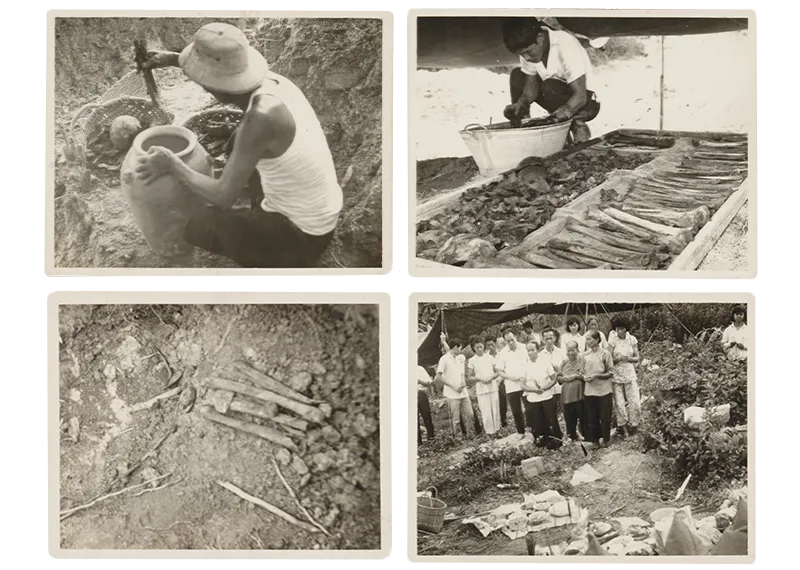
The Foo Chin Hwa Collection contains photographs of the exhumation process of the remains of the war dead organised by the Chinese Chamber of Commerce in 1963. These photographs serve as invaluable visual records of the process. The photographs reveal that after the remains were unearthed, they were washed and dried under a tent before being placed in an urn, which was then sealed. On the day that the remains were unearthed, board members of the Chinese Chamber of Commerce and families of the victims held prayers. Foo Chin Hwa Collection, National Library Singapore.
The year 2022 marked the 80th anniversary of the fall of Singapore. This essay features documents that offers insights into the lives of the Chinese in Singapore during the Japanese Occupation (1942–45). Donated by various individuals and clan associations, these materials are an invaluable source of research for scholars and other interested parties alike.
The donors include the late Nanyang historian and bibliophile Tan Yeok Seong, the first to generously gift his collection of books acquired over a lifetime – the Ya Yin Kwan Collection (椰阴馆) – to the National Library in the 1960s. The collection is rich in Singapore and Southeast Asian research materials, and is now housed on level 10 of the National Library Building on Victoria Street.
Just before the fall of Singapore, many Chinese clan associations destroyed the documents that they had accumulated over the years – such as membership lists with names and addresses – to prevent them from falling into the hands of the Japanese army. And as these clan associations were inactive during the war, records of their activities during this period are scarce. Nonetheless, the National Library of Singapore does hold a collection of items relating to the war and the occupation years that were donated by the Chinese community in Singapore.
The Dairies of Hsu Yun Tsiao
The late Professor Hsu Yun Tsiao was an eminent Nanyang historian who left his hometown in Suzhou, China, for Singapore in the 1930s in search of opportunities. He meticulously recorded his daily experiences and thoughts in five diaries, which began in the 1930s and ended on 24 February 1942, the 10th day after the British surrender.
Hsu vividly described the Japanese air raids, the desolate scene of the ruins after the bombings in Raffles Place and the mass screenings carried out by the Japanese army during Operation Sook Ching. These records serve as valuable primary materials on an important period in Singapore’s history.
| 新加坡宗乡会馆联合总会许云樵馆藏: 许云樵教授日记册 |
| [Singapore Federation of Chinese Clan Associations Hsu Yun Tsiao Collection: Diary of Professor Hsu Yun Tsiao] |
| Call no.: RRARE C818.8 XYQ-[HYT] |
| In the fifth volume of his diary, Hsu Yun Tsiao recorded his experience of the mass screening exercise in Chinatown on 22 February 1942. |
| “Brought water bottle and biscuits and went to Chinatown for registration, which in fact was an inspection. … at the street intersection, I saw people squatting on the street waiting for inspection, and there was a long queue at the back. I also squatted at the side of the street. After that, I followed the crowds and entered a shop for inspection. I was stamped on the front of my clothes and walked out of the shop after being asked a few questions. From what I heard, there were quite a number who were driven away in trucks by soldiers yesterday, but the reason given was unknown.” |
| Hsu Yun Tsiao Collection, National Library Singapore. |
Life During the Japanese Occupation
Following the fall of Singapore, the Japanese military government immediately launched campaigns promoting Japanese culture as a model of excellence, progress and prosperity as part of the Greater East Asia Co-Prosperity Sphere ideology. Teachers had to learn the Japanese language so that they could in turn teach their students. With rewards given out to those who learned Japanese well, Japanese classes became popular in night schools.
The occupation years were marked by shortages in food and daily necessities. As all food import and export businesses were taken over by Japanese companies, local wholesalers and retailers had to obtain approval from the Japanese military government to continue operation. Food was rationed, and adding to the woes, the amount that one could buy was greatly reduced as supplies became more limited.
Among the donated materials are personal documents and publications relating to the Japanese Occupation as well as items produced by the Japanese military government.
These invaluable archival documents offer insights into the daily lives of people during the occupation years.
| Call no.: RRARE 959.57 CNJ |
| To promote the Greater East Asia Co-Prosperity Sphere and the superiority of Japanese culture, the Syonan Publishing House published this Chinese compilation in 1943 which celebrates the development and achievements of Singapore after a year of rule by the Japanese military government. |
| Ya Yin Kwan Collection, National Library Singapore. |
| [Chin Kang Huay Kuan Collection: Ephemera of Chin Kang Huay Kuan] |
| Call no.: Chinese RCLOS 369.25957 CHI |
| This collection includes a “Census taking list” (户口调查票), which superseded the Good Citizen Certificate (安居证) issued by the Japanese military government. To ensure that food items were correctly allocated to families, the document lists the members in each household so that one could obtain the relevant number of food ration cards based on the number of family members. |
| Singapore Chin Kang Huay Kuan Collection, National Library Singapore. |
| 新加坡福建会馆珍藏: 天福宫二战期间产业登记, 1942–1948 |
| [Singapore Hokkien Huay Kuan Collection: Thian Hock Keng House Rent & Ground Rent Register, 1942–1948] |
| Call no.: RRARE 369.25957 XJP-[HHK] |
| This document provides insights into the currency issued by the Japanese military government during the Japanese Occupation in Singapore and Malaya. The currency was known as “banana money”. When the British reoccupied Malaya in September 1945, the Malayan dollar was in use once again. |
| Singapore Hokkien Huay Kuan Collection, National Library Singapore. |
Syonan-to Overseas Chinese Association
Under the direction of the Japanese military administration, the Syonan-to Overseas Chinese Association was established in Singapore (renamed Syonan-to, which means “Light of the South Island” during the Japanese Occupation) in March 1942. Its original purpose was to mediate between the Japanese authorities and the local Chinese community. However, the association became a tool for the Japanese military authorities to extort $50 million from the Malayan Chinese community as a “donation” through the various overseas Chinese associations located in Syonan-to and other states in Malaya.
To raise the money, the Syonan-to Overseas Chinese Association appointed representatives to coordinate within their own dialect groups and screened the assets of the other dialect groups. For instance, the assets of the Teochews were screened by the Hainanese, while those of the Hokkiens were checked by the Hainanese.
The Japanese military government also provided detailed information concerning personal assets through records from the Land Authority, the Registry of Companies and the Income Tax Authority to facilitate the screening work. The Chinese who had assets of less than $3,000 were exempted from taxation, while those who owned assets worth more than $3,000 were taxed 8 percent.
The deadline for presenting the $50 million to the Japanese authorities was 20 April 1942, although this was first extended to 20 May and then to 25 June. However, the full amount could not be raised on time, and the shortfall had to be made up with a loan from the Yokohama Specie Bank at an interest rate of 6 percent per annum, which had to be repaid within a year.
Subsequently, the responsibilities of the Syonan-to Overseas Chinese Association were expanded to execute policies implemented by the Japanese military government. These include assisting in the recruitment of labourers; helping the Japanese military government to restore social order; recruiting workers and Chinese police officers; encouraging the Chinese to clear and develop land and plant food grains; increasing the production of substitute products during the shortage of daily necessities; soliciting donations; and assisting in the large-scale resettlement of the Chinese to Endau in Johor to establish the New Syonan Model Farm.
Two primary documents in the Hsu Yun Tsiao Collection and Ya Yin Kwan Collection shed light on the role of the Syonan-to Overseas Chinese Association: the “Minutes of Meetings of Syonan-to Overseas Chinese Association”, and the “History of the Formation of the Oversea Chinese Association and the Extortion by J.M.A. of $50,000,000 Military Contribution from the Chinese in Malaya”.
The meeting minutes are photographs of the original documents taken by Hsu Yun Tsiao. The full text of the meeting minutes is also found in the publication Malayan Chinese Resistance to Japan 1937–1945. The “History of the Formation of the Oversea Chinese Association and the Extortion by J.M.A. of $50,000,000 Military Contribution from the Chinese in Malaya” is an English article written by the secretary of the association, Tan Yeok Seong, and first published in September 1946 in the Journal of the South Seas Society.
| [Minutes of Meetings of Syonan-to Overseas Chinese Association] |
| Call no.: RCLOS 305.895105957 MIN-[HYT] |
| The minutes of the Syonan-to Overseas Chinese Association’s first meeting held at the Goh Loo Club on 2 March 1942 recorded the establishment of the association. Lim Boon Keng was its president. The minutes of the last meeting, dated 23 August 1945, documented the work to be done in preparation for the closure of the association following the Japanese surrender. |
| The minutes recorded the organisation’s structure and activities, and included the names of members, the allocated amount of money to be donated to the Japanese military government borne by each Malayan state, the reasons for the inability to raise the requisite sum, the bank loan to meet the target, and survey statistics relating to food planting activities. |
| Hsu Yun Tsiao Collection, National Library Singapore. |
| [History of the Formation of the Oversea Chinese Association and the Extortion by J.M.A. of $50,000,000 Military Contribution from the Chinese in Malaya] |
| Call no.: RDTYS 940.53109595 TAN |
| Republished in 1947 by Tan Yeok Seong, the secretary of the Syonan-to Overseas Chinese Association, the article states the reasons for the establishment of the association and the detailed process in raising the $50 million to be donated to the Japanese military government. The election of representatives from each dialect group, the amount of money borne by each Malayan state and the loan agreement signed with the Yokohama Specie Bank are also mentioned. |
| Ya Yin Kuan Collection, National Library Singapore. |
Exhumation of War Victims and Construction of the Civilian War Memorial
On 19 February 1962, the Nanyang Siang Pau Chinese newspaper reported that the remains of war victims from the Japanese Occupation were found in a valley at seven and a half miles, East Coast Road. This prompted the Singapore Chinese Chamber of Commerce (now known as Singapore Chinese Chamber of Commerce and Industry) to set up the Disposal of Remains Committee on 28 February to undertake surveys, exhumations, burials and other remedial work. The committee also appealed to witnesses to provide information on the locations of other massacre sites, and subsequently, more remains in Changi, Bukit Timah and other parts of Singapore were found.
The exhumation work began in March 1963, and by December, a total of 27 places had been exhumed, with the remains filling 155 urns. In February 1966, exhumation was carried out again, and in October, exhumation was completed for all identified sites throughout the island. During this second exercise, another 12 locations were exhumed, and the remains filled 452 urns. All unearthed belongings from the war dead were handed over to the Sun Yat Sen Nanyang Memorial Hall for safekeeping.
In March 1963, the Singapore Chinese Chamber of Commerce set up a fundraising committee for the establishment of a memorial to remember the civilians who had died during the Japanese Occupation. In May 1965, they jointly formed the Memorial Building Fund Committee with the government to undertake all work related to the construction of the Civilian War Memorial. It was inaugurated by Prime Minister Lee Kuan Yew on the east side of the Padang on Beach Road on 15 February 1967. The memorial is made up of four pillars to symbolise the four ethnic races in Singapore (Chinese, Malay, Indian and Eurasian). A symbolic bronze urn was placed under the four pillars, while the unidentified remains of the war dead from the various sites were buried beneath the memorial.
The Singapore Lam Ann Association Collection consists of letters written by the public to the Chinese Chamber of Commerce on the locations of the massacre sites. Among these is a letter written by Neo Tiew recounting the death of 35 family members during the Japanese Occupation. Neo is known for developing Lim Chu Kang, and he also led the Singapore branch of the Kuomintang Youth League of the Three People’s Principles and the Overseas Chinese Anti-Japanese Army. Because of his anti-Japanese activities, Neo and one of his sons were evacuated from Singapore on 13 February 1942, at the request of the British. Unfortunately, the family members who remained behind were tortured and killed by the Japanese.
The Foo Chin Hwa Collection documents the exhumation of the remains of the war dead through photographs, which can be accessed from the National Library’s digital image database, National Library Online.
| [Documents on the Verification of Victims’ Remains] |
| 新加坡南安会馆珍藏: 新加坡中华总商会鸣冤委员会文件及其他信件 |
| [Documents from Appeal Committee of the Singapore Chinese Victims Massacred by the Japanese and Other documents] |
| Call no.: RCLOS 959.5703 XJP |
| These two folders contain letters from the public who wrote to the Chinese Chamber of Commerce in 1962, providing information on the locations of massacre sites. Some letters include hand-drawn maps showing the locations of the sites. |
| In some of the letters by family members, they described the clothing and items worn by the victims at the point of death, asking the Chinese Chamber of Commerce to take note during the exhumation. |
| There are also letters requesting that the chamber conduct further surveys and investigations into the massacre sites. |
| Singapore Lam Ann Association Collection, National Library Singapore. |
Japanese Occupation Materials
The items above are housed in either the Rare Materials Collection or the closed stacks of the National Library. Members of the public who want to find out more about these items may do so at the Reference Counter on level 11 of the Lee Kong Chian Reference Library, National Library Building, or via email (ref@nlb.gov.sg).
The National Library also has a rich collection of other historical documents relating to World War II such as the Lim Shao Bin Collection, which contains military maps and letters by the Japanese military army. Chop Suey (杂碎画集), a four-volume series of illustrations by the well-known artist Liu Kang who documented what he witnessed during the Japanese Occupation, is also available in the National Library.
The library also has issues of the Chinese edition of the Syonan Shimbun (昭南日报; Zhaonan ribao); textbooks such as Pictorial Guide to the Japanese Language (日本语图说) and Standard Nippon-Go conversation (标准日语会话读本); the magazine Nanguang Weekly (南光周刊); and personal documents like the certificates for completing Japanese language courses and food ration cards.
The National Archives of Singapore (NAS) has oral history interviews from people who lived through the war, sketches left behind by prisoners-of-war, and personal documents issued during the Japanese Occupation. These resources are available for viewing at the National Archives at Canning Rise. Those interested can email NAS at nas@nlb.gov.sg.
This is an edited and translated version of 从国家图书馆文献窥看日本占领时期的新加坡华社. Click
here to read the original piece.
 Lee Meiyu
Lee Meiyu (李梅瑜, left) is a senior librarian with the National Library, Singapore. Her research interest lies in the Singapore Chinese community. She is one of the writers behind the 2012 exhibition guide,
Money by Mail to China: Dreams and Struggles of Early Migrants, and
Roots: Tracing Family Histories – A Resource Guide, in 2013.
Seow Peck Ngiam (萧碧莹, right) is a senior librarian with the National Library, Singapore. Her responsibilities include collection development and management of donor collections such as the Hsu Yun Tsiao Collection. She also conducts research and writes on collection highlights for the library.
NOTES

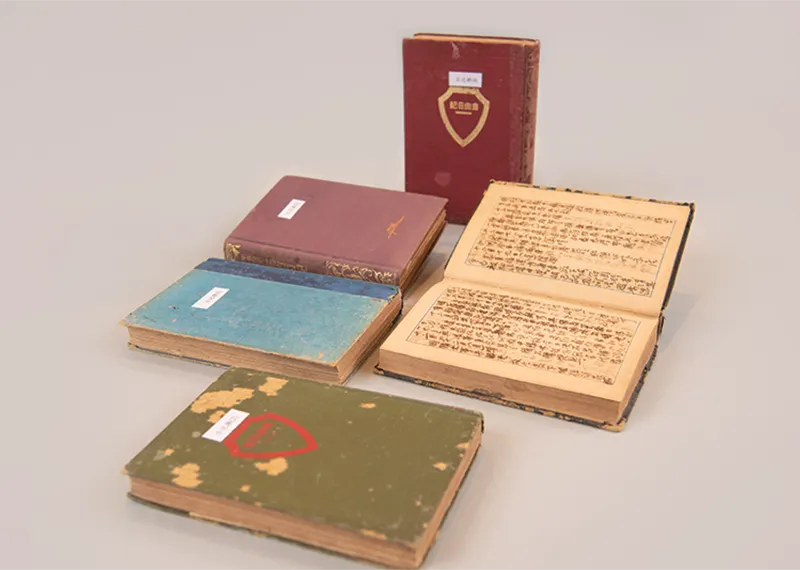
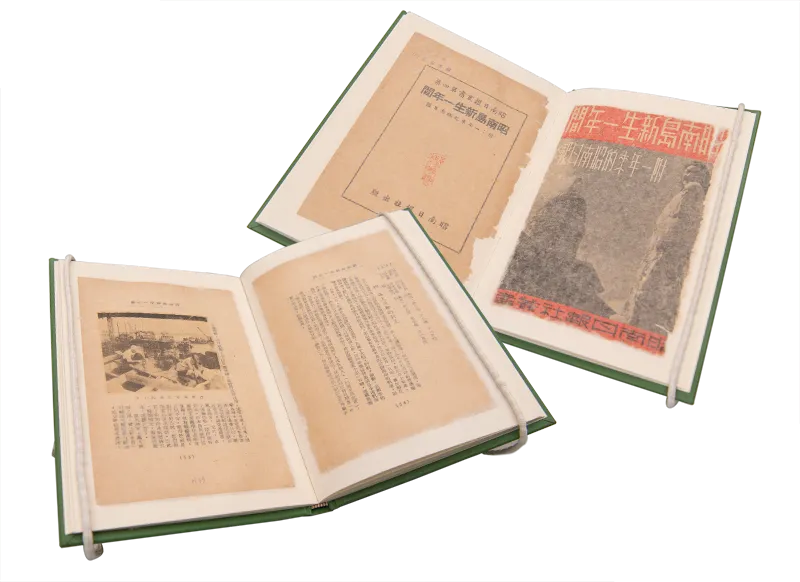
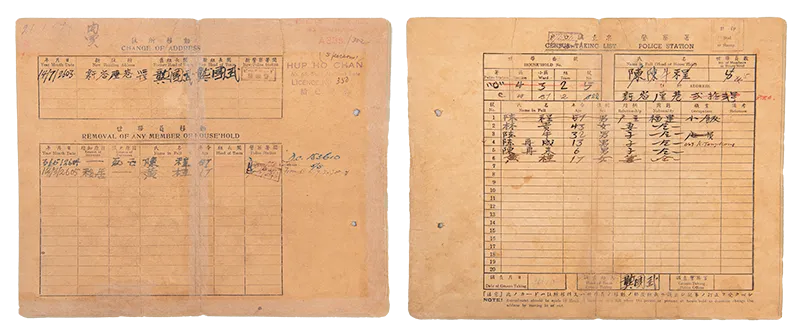
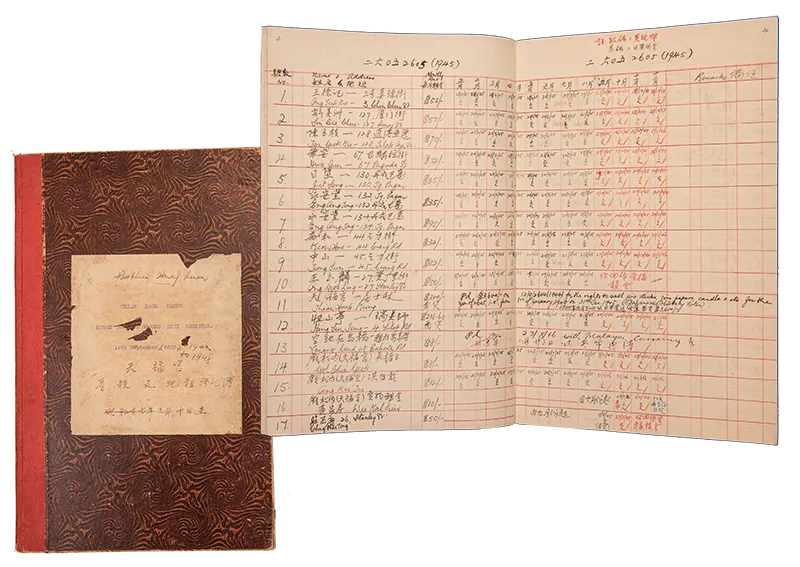
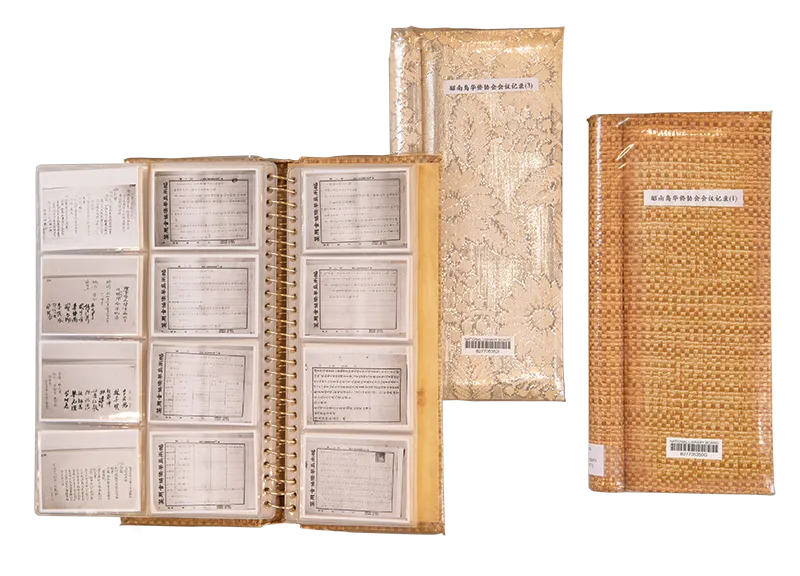
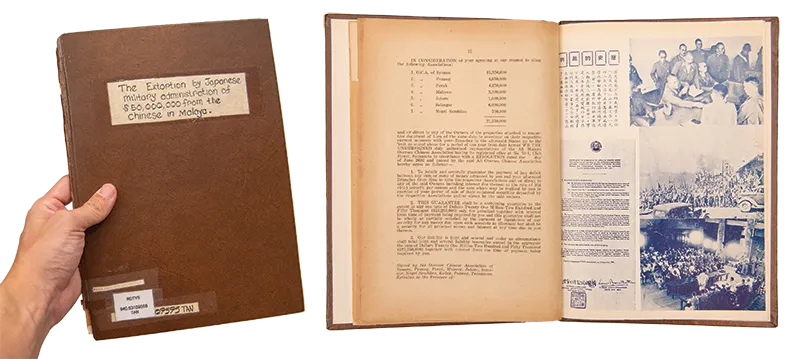
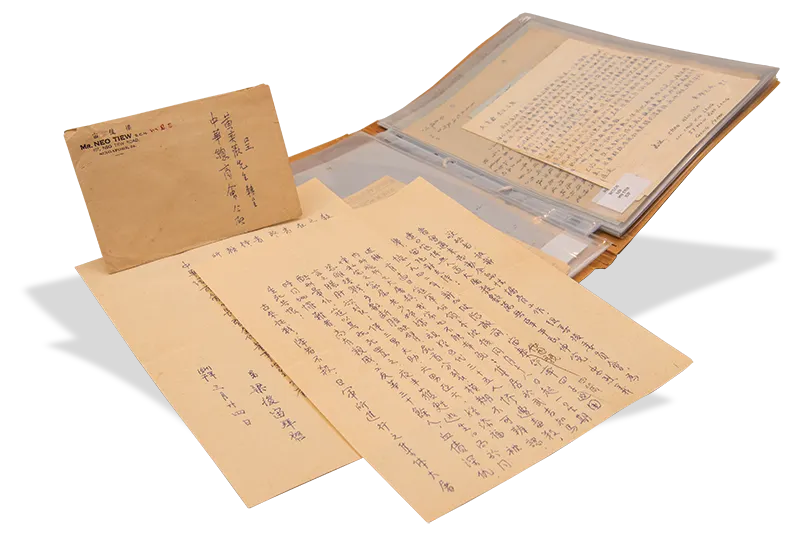
 Lee Meiyu (李梅瑜, left) is a senior librarian with the National Library, Singapore. Her research interest lies in the Singapore Chinese community. She is one of the writers behind the 2012 exhibition guide, Money by Mail to China: Dreams and Struggles of Early Migrants, and Roots: Tracing Family Histories – A Resource Guide, in 2013.
Lee Meiyu (李梅瑜, left) is a senior librarian with the National Library, Singapore. Her research interest lies in the Singapore Chinese community. She is one of the writers behind the 2012 exhibition guide, Money by Mail to China: Dreams and Struggles of Early Migrants, and Roots: Tracing Family Histories – A Resource Guide, in 2013.
